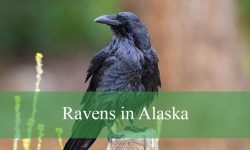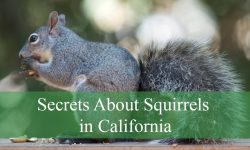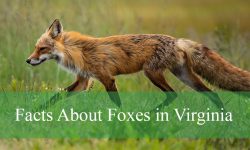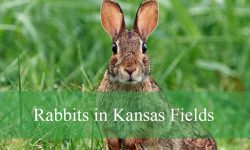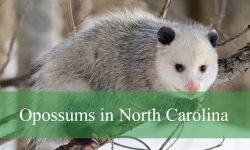Coyotes, scientifically known as Canis latrans, are one of North America’s most adaptable and cunning predators. While they are commonly associated with the western plains and deserts, Florida is home to a thriving population of these resilient canids. Often misunderstood and sometimes feared, Florida’s coyotes play a vital role in the state’s ecosystem, controlling populations of smaller mammals and even influencing the dynamics of suburban and rural environments. Observing their behavior and understanding their habitats offers fascinating insights into how wildlife adapts to human-altered landscapes.
In Florida, coyotes have managed to carve out a niche despite the presence of other apex predators, such as bobcats and alligators. Their ability to adapt to urban, suburban, and rural areas makes them a highly successful species. Researchers have documented an increase in coyote sightings near human settlements, demonstrating the animal’s flexibility in finding food, shelter, and safe breeding grounds. Studying coyotes in Florida reveals much about the delicate balance between wildlife and urban expansion, as well as the strategies these animals use to survive in diverse environments.
This article explores the characteristics, identification, behavior, hunting strategies, population dynamics, habitats, diet, and some surprising facts about coyotes in Florida. By the end, readers will gain a comprehensive understanding of these enigmatic animals and their secretive lifestyle in the Sunshine State.
Identification and Physical Characteristics
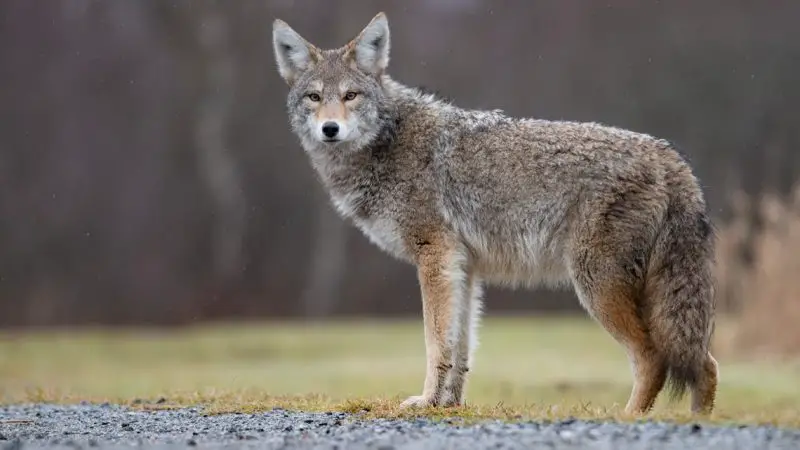
Coyotes in Florida are medium-sized canids with a graceful yet robust build. Adults typically weigh between 20 and 45 pounds, although individuals in some areas can exceed this range. The average body length ranges from 3 to 4 feet, including the bushy tail, which is often carried low when the animal is relaxed. Their height at the shoulder averages around 21 inches, giving them a lean, agile appearance that facilitates hunting in dense vegetation and across open fields alike.
The fur coloration of Florida coyotes is generally a mix of gray, tan, and reddish-brown tones. Their underbelly is lighter, often cream or pale yellow, while the back displays a salt-and-pepper pattern created by interspersed black-tipped hairs. Some individuals may exhibit more reddish hues, especially during warmer months, which blend with the state’s sandy soils and pine forests. Coyotes’ pointed ears, narrow snouts, and sharp eyes contribute to a distinct, fox-like appearance that can sometimes be confused with domestic dogs or gray foxes, particularly in urban environments.
One notable feature is the coyote’s tail, which is bushy and tipped with black. Unlike wolves, coyotes carry their tail low during calm activity but may raise it slightly when alert or communicating. Their paw prints are smaller and narrower than those of wolves, with four distinct toes and visible claw marks. The combination of physical features, including fur pattern, ear shape, and body size, allows wildlife experts and enthusiasts to identify coyotes accurately in the wild.
Behavior and Social Structure
Coyotes are highly adaptable, intelligent animals with complex behavioral patterns. Florida coyotes are primarily crepuscular, meaning they are most active during dawn and dusk, although they can be seen during the day in areas with minimal human activity. They are known for their vocalizations, which range from high-pitched yips and barks to long, mournful howls. These calls serve multiple purposes, including territorial communication, coordination with family members, and warning signals against intruders.
Socially, coyotes are versatile. While they often form monogamous pairs during the breeding season, they can operate alone or in small family groups known as packs. Packs usually consist of a dominant breeding pair and their offspring, though the size and composition of groups can vary based on local food availability and habitat conditions. Coyotes exhibit cooperative behaviors when raising pups, hunting, or defending territory. In urban areas, solitary coyotes are more common due to fragmented habitats and limited prey, demonstrating the species’ flexibility in response to environmental pressures.
Territoriality is a key component of coyote behavior. Coyotes mark their territory using scent glands and urine, creating invisible boundaries that help reduce conflicts with neighboring coyotes. Territories in Florida can vary from one to ten square miles depending on habitat quality and prey density. In suburban areas, territories may overlap with human-dominated landscapes, leading to occasional encounters with pets and humans. Despite their cunning reputation, coyotes generally avoid direct conflict with humans and will retreat if given the opportunity.
Hunting Strategies and Diet
Coyotes are opportunistic feeders with an extraordinarily flexible diet. In Florida, they consume a variety of food sources, from small mammals and birds to fruits, insects, and even carrion. Rabbits, rodents, and armadillos make up a substantial portion of their diet, while raccoons, squirrels, and ground-nesting birds are taken opportunistically. Coyotes also scavenge from human garbage and pet food, demonstrating remarkable adaptability in urban settings.
Hunting strategies are diverse and depend on the prey type and habitat. When targeting small mammals, coyotes rely on stealth and speed, often stalking their prey before launching a short, explosive chase. In forested areas, they use dense vegetation to their advantage, blending in while waiting for prey to approach. They are also known to hunt cooperatively, especially when pursuing larger animals such as deer fawns, allowing them to increase hunting efficiency and success rates.
Coyotes exhibit clever problem-solving behaviors, sometimes raiding chicken coops or accessing bird feeders with surprising ingenuity. Their ability to adjust feeding strategies based on prey availability ensures their survival even in challenging conditions. Seasonal variations influence diet, with more fruits and vegetation consumed during warmer months, while protein-rich prey dominates in cooler seasons.
Population and Distribution in Florida
Coyotes were not originally native to Florida but expanded their range from the western and central United States in the past century. Today, they are found throughout much of the state, from rural pine forests to suburban neighborhoods. Population density varies based on habitat quality, prey abundance, and human activity. In areas with abundant natural prey, coyote populations tend to be higher, while urbanized regions often have smaller, more dispersed individuals.
Research indicates that coyotes in Florida have adapted successfully to fragmented landscapes. They are present in wetlands, scrublands, hardwood hammocks, and even coastal areas. Urban sprawl has created new challenges and opportunities, with coyotes exploiting abandoned lots, golf courses, and parks as feeding grounds. Despite human encroachment, Florida coyotes maintain stable populations due to their high reproductive potential and adaptive behaviors.
Coyotes reproduce once annually, typically between February and April. Litters usually contain four to seven pups, which are raised in dens dug into the ground or in natural shelters such as hollow logs or dense vegetation. Pups remain with their parents for several months, learning hunting techniques and social behaviors. This high reproductive output contributes to the species’ resilience and continued expansion across Florida.
Habitat Preferences
Florida’s coyotes are highly adaptable in their choice of habitat. They thrive in diverse ecosystems, including pine flatwoods, hardwood forests, prairies, and wetlands. While natural areas provide cover and abundant prey, coyotes increasingly inhabit suburban and semi-urban landscapes, showcasing their remarkable flexibility. In rural areas, they prefer regions with dense vegetation for hunting and denning, while avoiding areas dominated by open fields without cover.
Coastal habitats also support coyote populations, where they feed on small mammals, birds, and marine carrion. In urban regions, coyotes exploit fragmented green spaces, including parks, golf courses, and residential areas with minimal human activity. The species’ ability to navigate both natural and human-altered landscapes underscores its adaptability and resilience, ensuring survival in a state that experiences frequent hurricanes, flooding, and other environmental challenges.
Fun Facts About Florida Coyotes
Despite their widespread presence, coyotes retain many intriguing traits that surprise even seasoned wildlife observers. One fascinating fact is their vocal complexity; coyotes use a combination of howls, yips, and barks to convey information to pack members, warn intruders, or locate dispersed offspring. Some researchers suggest that coyote vocalizations may even serve as a form of group coordination during hunting.
Another interesting behavior is their adaptability to human presence. Florida coyotes have been observed navigating suburban streets at night, avoiding humans while scavenging for food. They may even utilize drainage ditches, culverts, and abandoned buildings as temporary shelters, demonstrating an impressive ability to modify natural behaviors for survival in urban environments. Coyotes are also known to display playful behavior, chasing one another and engaging in mock fights, which helps young individuals develop essential hunting and social skills.
Coyotes’ impact on Florida ecosystems is significant but often understated. By controlling populations of smaller mammals, they indirectly influence plant communities and the distribution of other wildlife. Their presence also affects the behavior of prey species, creating a natural check on overpopulation and promoting biodiversity. Observing these animals provides a rare glimpse into the intricacies of predator-prey dynamics in one of the nation’s most ecologically diverse states.
Threats and Conservation
While coyotes are highly adaptable, they face threats from vehicle collisions, hunting, and habitat loss due to urban expansion. Human-wildlife conflicts are relatively rare but may occur when coyotes prey on pets or livestock. In some cases, public perception of coyotes as dangerous predators leads to efforts to reduce local populations, although these measures often fail due to the species’ reproductive resilience and dispersal abilities.
Conservation efforts focus on educating the public about coexistence strategies, emphasizing the importance of securing food sources, supervising pets, and understanding coyote behavior. By fostering awareness, communities can reduce conflicts while allowing coyotes to continue fulfilling their ecological role. Florida’s coyotes are not considered endangered, and their population remains stable, highlighting their success as a species capable of thriving alongside humans.
Observing Coyotes Safely
For wildlife enthusiasts and photographers, observing Florida coyotes requires patience and respect for their natural behavior. Dawn and dusk are the best times for sightings, particularly in less disturbed habitats. Maintaining a safe distance is crucial, as coyotes are wild animals with unpredictable reactions. Binoculars and telephoto lenses are recommended for close observation without causing stress or disturbance.
Learning to identify coyote tracks, scat, and vocalizations enhances the observation experience. Tracks reveal clues about recent activity, while scat can provide information about diet and territory. Vocalizations, especially the characteristic yips and howls, often indicate the presence of a coyote even when the animal is hidden from view. Combining these observational tools allows enthusiasts to gain deeper insights into coyote behavior while minimizing human impact.
Conclusion
Coyotes in Florida exemplify adaptability, intelligence, and resilience. Their presence across diverse ecosystems highlights their remarkable ability to coexist with human-altered landscapes while maintaining vital ecological roles. From their physical characteristics and keen hunting skills to their complex social structures and vocal communication, Florida’s coyotes offer endless fascination for wildlife enthusiasts and researchers alike.
Understanding coyotes in Florida requires more than simple observation; it involves appreciating their behavioral complexity, ecological significance, and subtle interactions with the environment. These enigmatic canids remind us that even in highly developed regions, wildlife continues to thrive, adapt, and enrich the natural world. By studying and respecting coyotes, Floridians gain insight into the intricate balance of ecosystems and the hidden secrets of one of North America’s most remarkable predators.
FAQs About Coyotes in Florida
What Do Coyotes in Florida Look Like?
Coyotes in Florida are medium-sized canids, weighing between 20 and 45 pounds, with a body length of about 3 to 4 feet including their bushy tail. Their fur is usually a mix of gray, tan, and reddish-brown, with a lighter underbelly. They have pointed ears, narrow snouts, and sharp, alert eyes. The bushy tail is often tipped with black and carried low when relaxed. Florida coyotes can sometimes be confused with domestic dogs or gray foxes due to their similar size and coloration.
How Do Coyotes Behave?
Coyotes are highly intelligent and adaptable animals. They are primarily crepuscular, active during dawn and dusk, though they can sometimes be seen during the day. Their vocalizations include yips, barks, and long howls used for communication with family members and for territorial purposes. Coyotes can be solitary or live in small family packs, cooperating during hunting and pup-rearing.
What Do Coyotes in Florida Eat?
Coyotes are opportunistic feeders with a highly flexible diet. They consume small mammals like rabbits, rodents, and armadillos, as well as birds, insects, fruits, and sometimes carrion. In suburban areas, they may scavenge from garbage or pet food. Their diet adapts seasonally, with more protein-rich prey consumed in cooler months and more vegetation and fruits in warmer months.
Where Do Coyotes Live in Florida?
Coyotes in Florida inhabit a variety of ecosystems, including pine forests, hardwood hammocks, wetlands, prairies, and even suburban areas. They are highly adaptable to both natural and human-altered landscapes, making use of parks, golf courses, and abandoned lots for feeding and shelter. Coastal regions also support populations, where coyotes feed on small mammals and marine carrion.
Are Coyotes Dangerous to Humans?
Coyotes generally avoid direct contact with humans and are not considered a major threat. Most conflicts occur when coyotes prey on pets or livestock. By securing trash, supervising small pets, and avoiding feeding wildlife, humans can reduce encounters. Coyotes are more likely to retreat than engage when confronted by people.
How Can I Identify Coyote Tracks?
Coyote tracks are narrow and elongated, with four distinct toes and visible claw marks. They are smaller than wolf tracks but larger than fox tracks. Observing tracks in sandy or muddy areas can provide clues about recent coyote activity, movement patterns, and territory boundaries.
How Do Coyotes Communicate?
Coyotes use vocalizations, body language, and scent marking to communicate. Their signature howls, yips, and barks convey information about territory, family members’ locations, and potential threats. Scent marking with urine or feces establishes territory boundaries and helps avoid direct confrontations with neighboring coyotes.
How Can I Coexist with Coyotes in Florida?
Coexisting with coyotes requires understanding their behavior and minimizing attractants. Secure garbage bins, avoid leaving pet food outdoors, supervise small pets, and maintain a safe distance if observing coyotes. Educating neighbors about coyote behavior helps create safe environments for both humans and wildlife while allowing coyotes to fulfill their ecological role.

